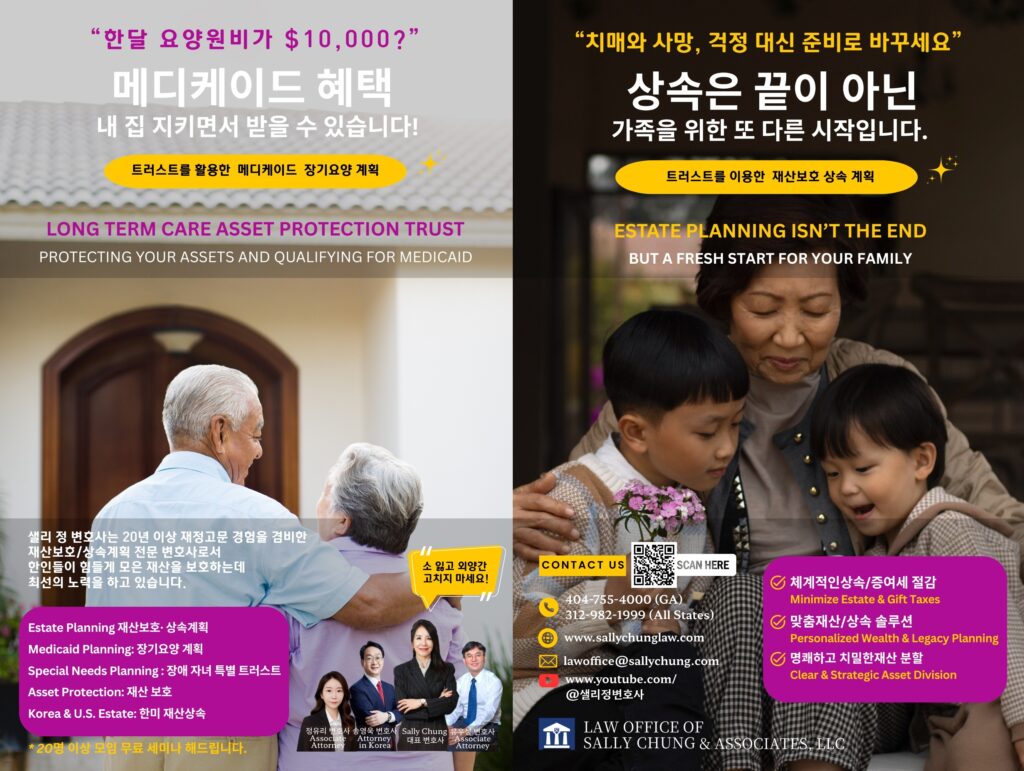
05 Jan The Middle-Class Dilemma in Long-Term Care Planning
If you or your spouse ends up needing long-term care, with nursing home costs reaching $100,000 to $200,000 or more per year, those with substantial wealth may not need or should not even attempt to receive government benefits.
On the other hand, the truly poor and low-income individuals can qualify for Long-Term Care Medicaid, so there is little concern in that case. But for the middle class, those with assets that are too much to qualify for Medicaid, but not enough to comfortably afford long-term care, failing to set up an asset protection plan now could result in being unable to leave even a single home to their children.
In the State of Georgia, to qualify for Long-Term Care Medicaid, a person’s monthly income must be less than $2,901 (as of 2025), and if they also pass the asset test, the government will begin covering nursing home expenses.
Some people say, “I don’t have much, so I probably don’t need a trust.” Delaying asset protection planning for that reason is a serious mistake.
Many Korean Americans are unaware of recent changes to Medicaid law and mistakenly believe that if they give assets to their children, the government will cover their long-term care expenses. As a result, they submit Medicaid applications only to be denied or have thier exisiting benefits revoked, leading to legal cases that require extensive time to resolve.
The Five-Year Look-Back Period is a rule under which Medicaid reviews all asset transfers made within five years prior to the application date. This rule applies universally and cannot be avoided. The state’s Medicaid agency examines whether any assets were transferred below fair market value—for example, selling a home to a child at a reduced price. If such a transfer is found, a transfer penalty period is imposed, during which the applicant is disqualified from receiving benefits based on the amount transferred.
This rule applies regardless of who the assets were transferred to whether grandchildren, relatives, or even donations to religious or charitable organizations. All such transfers are reviewed, regardless of the amount. The annual federal gift tax exemption of $16,000 has nothing to do with Long-Term Care Medicaid, and such gifts are still counted as available resources by the government. In some cases, applicants have had to ask their children or the receiving organization to return the gifted assets.
However, certain transfers are exempt, such as limited transfers to a spouse or placing assets in a Special Needs Trust for a disabled child. These exceptions should be an essential part of your asset protection planning.
Unless proper planning is done, your existing assets may be exhausted on nursing home care—leaving your spouse impoverished and nothing left for your children. For this reason, it is especially important for the middle class to work with professionals and plan at least five years in advance.
Even if long-term care is never needed, setting up an asset protection trust provides many advantages over giving assets directly to your children.


